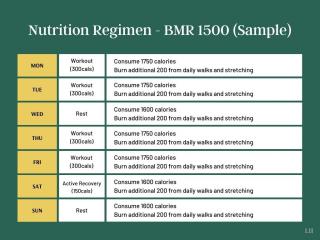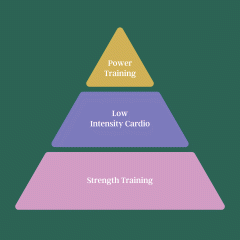In this article, you will learn what science tells us about the workings of our memory. Then, I will tell you exactly how to take advantage of this to drastically improve your memory and learn faster.
These are the same techniques used by “mental athletes” who can memorize a list of 100 words in a few seconds. Just imagine what these skills could do for your career.
Let’s start with the basis that underpins the concept of memorization.
1. Focus Your Attention
Anything that you consciously focus your attention on is picked up by your brain and in some form stored in your memory. This makes focus the single most important factor for memorization.
To store anything in your memory—both short-term and long-term—you have to focus your attention on it. In very simple terms, the more intently you focus on what you want to remember, the more likely your retention of that item will be. This is, in fact, how our brains are designed.
When focusing on something, you are telling your brain that this is something important to take note of because you might have to use it again in the future. Focusing better can help you improve your memory.
Although focus is a necessary condition for memory, it’s not always a sufficient condition. The information you have just stored by concentrating isn’t necessarily easily accessible.
Focusing your attention on something is like having a huge storehouse that you just randomly chuck in what you want to memorize. You know it’s in there somewhere, but it can be terribly difficult to locate it when you need it down the line. To make it easier to access, you need to organize it.
To do this, you need to use some other memory devices. There is something called mnemonics, which is the perfect tool for this task.
2. Use Mnemonic Devices
Mnemonics are devices or tricks that you can use to associate with information to make it more memorable. A mnemonic device could be a rhyme, image, sentence, phrase, or something similar.
“PEMDAS”—used to remember the order of operations in math—is an example of a mnemonic device:
P – Parenthesis E – Exponents M – Multiplication D – Division A – Addition S – SubtractionThe reason why this is a good mnemonic is that you take something quite tricky to remember by rote, and you make it a whole lot easier to remember by making it into a memorable word.
If you need to remember a particular order of something, make up your own mnemonics. Mnemonics are really useful in remembering words and expanding your vocabulary. Consequently, mnemonics are a great way to improve your memory. To memorize difficult words, say the word out loud a few times and listen to what it sounds like. Then, make a mental image of that.
How to Use Mnemonics?
Let’s say you want to remember the difference between these two words:
Imperious – Arrogant and domineering Impervious – “impervious to…”—unable to be affected byThese two words are easy to confuse with one another. But if we use some mnemonic tricks, suddenly it’s not a problem anymore.
Here is how I would do it.
The word “imperious” sounds a bit like “imperial.” As soon as I think of an imperial person, I see a king or some kind of medieval conqueror. That’s just the association I personally get and if it works for me, that’s all I need. Then, I visualize an arrogant king with a cape and a Hitler mustache pointing his finger and shouting to everyone around him.
If you split up the word “impervious,” it sounds like “imp” (a small, demonic creature) and “pervert.” So, the associations I get is a “pervert imp.”
To remember the meaning of this word, I visualize the following image:
An imp is standing in a park. Everyone around him is furiously throwing stuff at him. They’re angry because the pervert imp has harassed them all. But the imp isn’t affected by any of the stuff that is being thrown at him, because he is impervious to it.
When I hear these two words, I see the images that I just imprinted in my mind and I, therefore, recall the meaning of the words. It might be weird, but it works like a charm.
You probably noticed that I mixed in some mental imagery here. It wasn’t purely by the help of mnemonics that I memorized this. There is a very good reason for that.
The truth is, it’s hard to avoid imagery when it comes to memorization. Images are even more important than mnemonics. Let me tell you why.
3. Form Mental Images
Making mental images is the secret that underpins everything that has to do with having an impressive memory. Knowing how to improve your memory requires learning how to form mental images.
If you watch some memory athletes perform amazing feats of memorization, it’s the mental images that go through their heads that make the magic happen.
Tony Buzan, a Messiah when it comes to memorization, says it himself:
“The art and science of memory is about developing the capacity to quickly create images that link disparate ideas.”
The reason why you think you might have a bad memory (or at least not an amazing one) is simply that you haven’t developed the capacity to quickly recall images in your head. It takes a bit of effort to do this. But in my opinion, it’s absolutely worth doing it.
You don’t have to use these powerful techniques just to memorize menial information like phone numbers and shopping lists. You can use them to memorize useful information like books, articles, concepts, etc.—stuff you can put into your long-term memory that makes you smarter and information that gives you an edge in debates.
This is what makes me excited about the art of memorization.
We Remember Images Better Than Everything Else
The scientific answer to why making mental images is such a powerful memorization technique can be explained by how the human brain evolved throughout history when we were hunter-gatherers.
Back in those days, we didn’t need to remember speeches, passwords, lists, and concepts. Instead, what we did have to memorize were features in nature, such as where to find food, what food that was edible, and the route back to the camp.
This is highly visual stuff. And since these were the skills that our ancestors’ survival depended on, we developed these abilities.
Foer further comments:
“The point of memory techniques is to … take the kinds of memories our brains aren’t good at holding on to and transform them into the kinds of memories our brains were built for.”
How Does One Form Mental Images?
First, you need to make a mind palace so you have somewhere to store the images. In your head, visualize a house or building that you know really well. It’s important that you can clearly see how it is furnished as well.
The next step is to create the images. I’m going to give you a real-life example so you can get a sense of how to actually go about doing this.
I often listen to podcasts while I’m cooking, cleaning, or doing any other menial tasks. Often, something really noteworthy comes up. I want to make sure this piece of information won’t be lost, so I put it in my mind palace.
I have several mind palaces that I fill with images. One for each book or subject I want to memorize things from. One mind palace I have is for things I happen to come across from podcasts.
Recently, I was listening to a podcast where Dr. Giles Fraser was interviewing Jonathan Sacks, a well known philosophical rabbi in Britain. Jonathan Sacks mentioned a phrase called “Impact Economics,” a term which suggests that a company should be judged not only by its profit but by its social impact on people’s lives.
I wanted to remember this term and its meaning, so I placed it in my mind palace like this:
First, I selected what section of the mind palace I wanted to attach the image to. In my case, it was by the corner in one of the rooms.
The image I created was Scrooge McDuck worshipping a massive pile of coins (economics). Then, a meteor comes crashing down (impact). The corner of the building is shattered and the coins spread around to the other people in the room who manically grab as much as they can. It has been a positive social impact since they are now all getting some money.
To recall the information I have memorized, I take a “mental walk” through my mind palace. I will see all the images I have created there and therefore, recall the information attached to the images.
Making Your Images More Memorable
Making your mental images more memorable allows you to improve your memory more effectively. The more wild, colorful, exaggerated, and vivid you make the image, the better you will remember it. Also, it matters where you exactly place your images in your mind palace. You must attach it to a section of a room or a piece of furniture, so it stays there permanently.
As you can see, this technique may seem totally bizarre and would surely put off a lot of people. So, why would anyone want to use such a silly, ludicrous technique?
It might be ludicrous, but it works. It’s one of the best tools for memorization that we have.
4. Review and Repetition
Now, you have some really powerful tools to initially insert and organize information in your memory. But this information is still only in your short-term memory.
You have two options. You can either place this information in your long-term memory, or you can let it slowly degrade from your memory and forget about it altogether.
Which one do you want? Well, why on earth would you want to go to such great lengths to just temporarily remember something?
If it’s a shopping list, fine. Please let it degrade. But as I mentioned earlier, I’m personally not very interested in memorizing short-term stuff like shopping lists and information you can easily lookup. I am more interested in information that should go into your long-term memory, and that’s what this section is all about.
The keywords when it comes to putting something into your long-term memory are “review” and “repetition.” These are important techniques for you to improve your memory.
We Don’t Remember Things Without Repetition
As soon as you learn something new, it goes into the temporary holding place for memory called short-term memory. It is then forgotten shortly after learning it because your brain disregards it as something without value. This is because you haven’t used it for anything after you learned it yet.
To remember something for a long time, you need to tell your brain that it is important so that it will create permanent connections between your brain cells. You do this by reviewing the material a few times.
By repeating it regularly, you tell your brain that it is worth remembering. It has no choice but to finally place it in your long-term memory.
The most efficient way of reviewing material is with a technique called “spaced repetition.”
Improve Your Memory Using Spaced Repetition
Spaced repetition is a memorization and learning technique that involves gradually increasing the time gap between each point of repetition. It’s a neat way for you to improve your memory without too much effort.
Spaced repetition has been tested by psychologists and has proven to be more successful than repeating previously learned material at random intervals. This is because spaced repetition takes advantage of your brain’s psychological spacing effect. What this essentially means is that you review the material at the point just when you’re about to forget it.
For each time you review the information, it takes longer and longer for the memory to degrade. With enough repetitions at just the right time, you will strengthen the connections between your brain cells and make the memory permanent.
If you want to use spaced repetition, I recommend using an app called Anki. It does everything for you.
It functions like digital flashcards. You create questions that test your memory of whatever it is that you want to remember. Then, you create the answer to each question. When you go through each question, you click on a button to display the answer.
If you answered correctly, the answer will come up again in a few days. If you’re wrong, the question will come up again almost straight away.
So, what this and similar apps do is to make sure that you review the information that you can easily recall less frequently and the stuff that you find hard to remember more frequently. A good way to make sure you remember the images in your mind palace is to make them into flashcards for Anki.
As for the question, write whatever it is that you are trying to memorize. Then, write a short description of your mental image as the answer. Before you view the answer, visualize the image in your head. This will strengthen your memory of the image.
Final Thoughts
There you go. Four proven ways to improve your memory and learning speed.
If creating a mind palace seems like a lot of work, the shortcut is to just remember these three key points:
Get into the habit of forming a mental image of what you want to remember. The wilder and more absurd, the better. What you focus intently on, your brain remembers. Use mnemonic devices as described earlier in the article.This is definitely going to give you a substantial memory boost and make you learn faster.
More Tips on How to Improve Your Memory
Featured photo credit: Green Chameleon via unsplash.com





























































